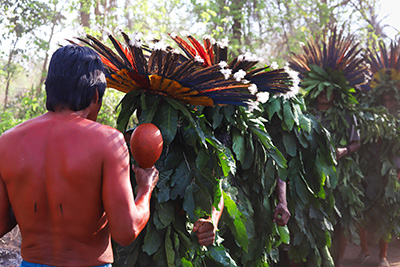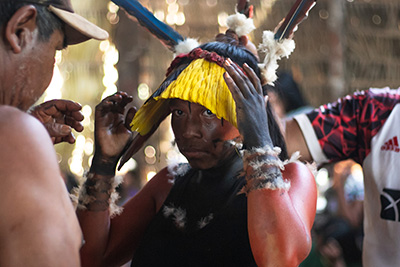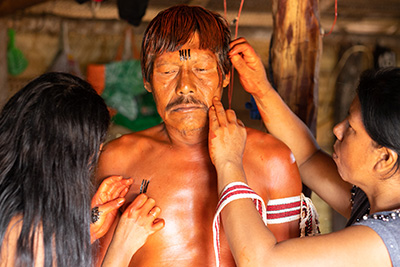Fieldwork
The mortuary ceremonies performed by the Bororo, an indigenous people living in Central Brazil, employ a complex interplay of senses to evoke the memory of the dead. The three-month-long spectacle of movement, sound, and colour that comprises the ritual cycle mobilises various modes of relation among the living and between the living and the dead. It is precisely these relationships and how they are enacted through singing, ornamentation, food offerings and ritual wailing that form the main subject of my PhD research. Each photo presented here was taken during a different phase of the Bororo mortuary cycle and intends to display the centrality of body ornamentation in dealings with the aroe, the Bororo term for ‘dead souls’. The first photo shows one of the dances performed while the deceased’s body is still buried in the centre of the circular village. The second photo was taken on the day the body was exhumed and prepared for secondary burial – by having the bones washed and covered with red dye and feathers. The woman in this photo danced with the mortuary basket moments before it housed the ornamented bones. Finally, the third image shows the final act of the Bororo mortuary cycle: the retribution for the killer of a large predator, the avenger of the dead.
Making the souls dance
A singer faces a line of ornamented dancers, each personifying the soul of a specific deceased person. The movement and sound of the rattles soothe the unsettled souls upon their arrival in the village.
A dancer’s gaze
A woman has her worn-out ornamentation adjusted in a pause from the strenuous task of dancing with the mortuary basket.
The avenger's prize
After avenging a death by killing an ocelot, a man is carefully adorned by the dead person’s kin. From now on, he can make and wear the received facial and cotton designs – otherwise exclusive of the deceased’s clan.



